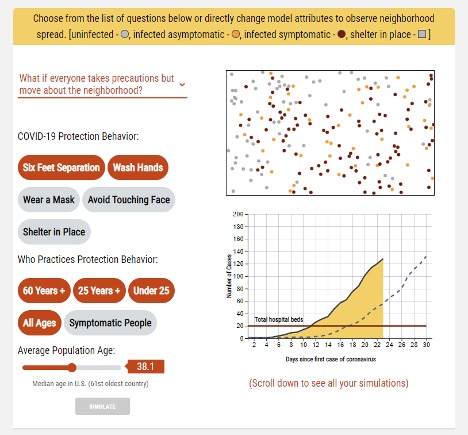
How humans take stock of the world through visual cues has been Colorado State University Professor of Psychology Jessica Witt’s life’s work. Now, she’s applying that expertise to the current pandemic, helping to create graphics and visualizations to explain key scientific concepts to the public.
Witt and a team led by University of Michigan researchers have been awarded a National Science Foundation Rapid Response Research grant to develop COVID-19 “information visualizations” to identify the best ways to visually communicate COVID-19 risk data to the public. Their project aims to clear up misinformation and mistrust in science while helping people understand the benefits of behaviors and policies like mask-wearing and social distancing.
The project will tackle public mistrust and confusion around COVID-19 infections and spread. The team will create visualizations that lay out factual information about how the disease spreads and how behaviors like mask-wearing can help, then test the visualizations’ efficacy through survey data. They will assess whether viewing the visualizations makes a difference in people’s perceptions and attitudes during the pandemic.
“People are scared, and they want information,” Witt said. “They don’t always know how to make sense of the information. If we can make it easy and accessible for them and help them understand the importance of engaging in safe behaviors so we can return our kids to school or go on trips to visit family, that would be phenomenal.”
The team ran pilot studies with preliminary graphics that indicated seeing the animations increased positive attitudes toward social distancing, for example. The NSF RAPID project will extend and refine that work.

Example of a preliminary visualization tool created by Witt and colleagues. A participant can select what safety behavior is used, and by whom.
Witt is a researcher in psychology who has expertise in human visual systems. She explained two aspects of how people perceive through vision: One is how sensitive we are to information, and the other is how biased we are in taking in information and estimating levels of risk.
With Witt’s expertise in disentangling sensitivity from bias, she will help the team develop and empirically test data visualizations that best serve the public by clearly communicating the information while reducing biases in how that information is interpreted.
The team hopes their findings can be applied to policymaking decisions for things like risks associated with sending students back into classrooms this fall.
“To be doing something that could have impact right now in a time of crisis does feel good, and I’m really hopeful that we are able to develop something that can help people while they are making what feels like impossible choices,” Witt said.